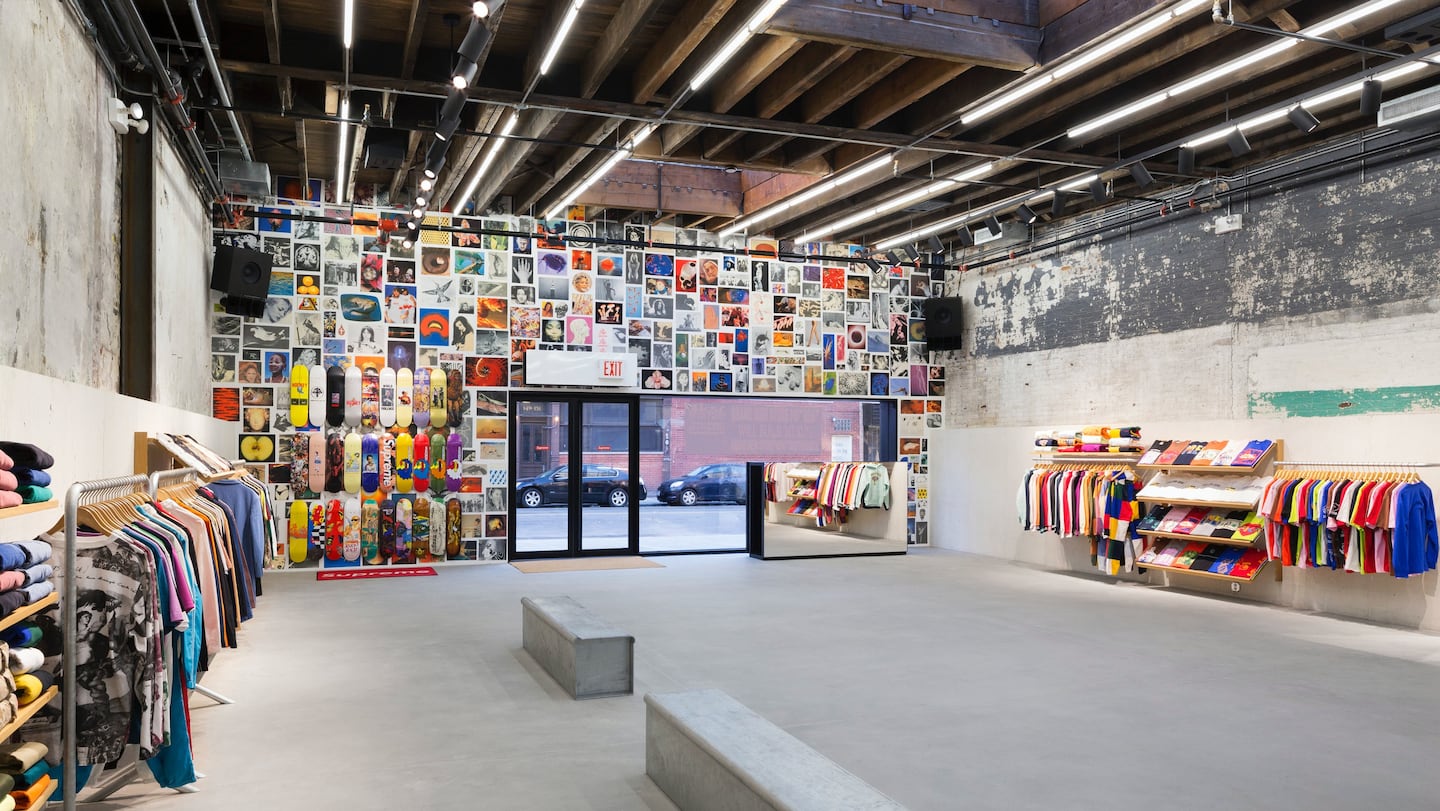
The Business of Fashion
Agenda-setting intelligence, analysis and advice for the global fashion community.

Agenda-setting intelligence, analysis and advice for the global fashion community.

NEW YORK, United States — Supreme founder James Jebbia has confirmed that private equity firm The Carlyle Group has taken a stake in the skater-inflected label and longtime purveyor of 'downtown cool.'
“We’re a growing brand, and to sustain that growth we’ve chosen to work with Carlyle, who has the operational expertise needed to keep us on the steady path we’ve been on since 1994,” said Jebbia in an exclusive statement to BoF. “Working with Carlyle allows us to concentrate on doing what we do best and remain in control of our brand, as we always have.” The terms of the transaction were undisclosed, but Jebbia’s statement suggests Carlyle has taken a minority stake in the business.
The deal marks the first time a top-tier private equity firm has invested in streetwear and underscores the power of the Supreme brand — often dubbed "the Chanel of streetwear" — and its innovative business model, rooted in cool but accessibly-priced product and tightly controlled releases, which "drop" on a weekly schedule that's far faster than the traditional fashion cycle and designed to drive consumer engagement with a stream of constant newness.
Since 1994, when Jebbia opened the label’s first outpost in a storefront on Lafayette Street, Supreme has become a global cult, buoyed by a scrappy start-up hustle and an almost puritanical sense of local pride. Today, Supreme is equally known for its skater-inflected cool as its feverishly loyal fanbase who often camp outside its stores for each new product drop.
ADVERTISEMENT
Investment from Carlyle will give Supreme added heft to drive rapid expansion and seize what is undoubtedly a significant growth opportunity. This week, the label opened its eleventh store in the gentrified Williamsburg neighborhood of Brooklyn with a big party attended by old-time skaters such as Mark Gonzales and Peter Bici, Hollywood actor James Franco, former professional basketball player Amar'e Stoudemire, MoMA PS1 director Klaus Biesenbach and photographer Petra Collins. The new store adds to existing boutiques in Los Angeles, London, Paris and Tokyo (with the exception of Dover Street Market, the company does not wholesale). But the brand currently has no presence in China, the world's second-largest consumer market.
And yet expansion poses an almost existential question for Supreme: how can the label continue to grow without killing its homegrown cult appeal? Earlier this year, Supreme’s blockbuster collaboration with luxury mega-brand Louis Vuitton attracted waves of consumer excitement as well as charges that the company had “sold out.” Some longtime fans of Supreme criticised the label, while others moved on to other cult streetwear brands like Palace Skateboards.
Carlyle, which typically doesn't hold businesses indefinitely, makes for an interesting partner for Supreme, a label with long-term cultural credibility and brand equity to consider. The private equity firm presumably aims to rapidly grow and then sell the company within three to five years. Future acquirers could include a major conglomerate like LVMH, which owns Louis Vuitton. Supreme could also IPO, following a route taken by the likes of Michael Kors.
Related Articles:
[ BoF Exclusive | James Jebbia on Taking Supreme GlobalOpens in new window ]
[ What the Fashion System Can Learn From Supreme-Style Product DropsOpens in new window ]
[ Inside Supreme: Anatomy of a Global Streetwear CultOpens in new window ]
In 2020, like many companies, the $50 billion yoga apparel brand created a new department to improve internal diversity and inclusion, and to create a more equitable playing field for minorities. In interviews with BoF, 14 current and former employees said things only got worse.
For fashion’s private market investors, deal-making may provide less-than-ideal returns and raise questions about the long-term value creation opportunities across parts of the fashion industry, reports The State of Fashion 2024.
A blockbuster public listing should clear the way for other brands to try their luck. That, plus LVMH results and what else to watch for in the coming week.
L Catterton, the private-equity firm with close ties to LVMH and Bernard Arnault that’s preparing to take Birkenstock public, has become an investment giant in the consumer-goods space, with stakes in companies selling everything from fashion to pet food to tacos.